Most perennial beds fill in by early summer
Last post I promised to explore plant groups in my garden and how they came to be, but first here is a look at what I avoid. If you've ever driven through a suburban neighborhood you've seen it, the dominant aesthetic of landscaping: specimen perennials and coiffed shrubs, mostly evergreen, widely spaced in expanses of bark mulch or landscape stone. The fact that dyed mulch is popular indicates that rather than being used mainly to suppress weeds and conserve moisture, the primary purpose is decorative. The vast bare territory between plants is desired, and frequent pruning is done to preserve it.
Instead of each yard being an expression of the homeowner’s unique style, we find unimaginative presentations of a limited variety of species. This is a sad state of affairs because of the boring conformity and the fact that all that space represents missed opportunities for growing more plants. There is an additional issue too, the fact that wide open spaces create problems by inviting unwanted plants.
It might be argued that in music that the space between notes is as important as the notes themselves. Without this emptiness, there would be no music, just a cacophony of noise without rhythm or beauty. The opposite is true in the botanical world. Mother Nature hates a vacuum. Her economy is such that all available sunlight, moisture, nutrients, and space are used to full advantage.
Open area near the center of the garden
Of course, some gaps are necessary. A foundation planting might be kept purposely sparse in order to keep plants off the house and walkways and to preserve access to utility boxes. In the potager I must be able get a wheelbarrow between beds and to have room to harvest easily. Sometimes crowding promotes fungal problems and plants are widely spaced to promote air flow. In general though, I avoid gaps without a specific purpose.
This isn't an original idea. Forest gardens, aka food forests, are designed to contain the various layers and elements of mature woods. Plants deemed useful take up space and shade the ground, making it harder for undesirables to creep in. I apply this approach to the potager, just on a shorter scale. I encourage full growth inside beds, where plants touch and intermingle. In many annual beds plants are well spaced, but this is the exception rather than the rule.
Here is a look at some specific areas and how they came to be.
The guild of misfits
Every gardener should have a bed into which a certain class of plants can be put. These plants aren't truly misfits, but rather a mix of volunteers, immigrants, and coveted plants suddenly acquired without a plan in place. It might turn out to be a temporary arrangement or a dazzling and permanent success. So far this season mine has held overwintered kale, aggressive gojiberry suckers, several transplanted borage volunteers and one valerian, a barely living milkweed that was slated for the waste pile at work, plus queen of the prairie and yellow coneflower.
The bed of misfits
The general goal is to have a spectacular display that feeds insects and requires minimal maintenance. What will happen in the misfit bed next year? I don't know, but it will be exciting to witness. If it isn't magnificent I can simply move the plants elsewhere and try something else. In any case the knowledge gained will be valuable and I can put it to use in future plant placements.
The edge guild
I've read lots of complaints about plants, especially natives, that are desirable but whose growth is too vigorous for a garden. A common rejoinder is that because native plants are crucial for healthy ecosystems, gardeners need to just put up with them and stop calling them aggressive.
This approach shuts down discussion while providing no answers, and the reality is that many natives and other useful plants really are too aggressive for a typical bed. They create frustrations due to constant removal and the worry that they will kill off less vigorous plants. A ridiculously simple solution exists which is to group plants based where they fall on the timid/aggressive scale.
Transition area between control and chaos with banana, culinary sage, yarrow, garlic chives, sedum, chicory
Although zones are usually applied to larger areas, I use the same concept in the potager. (Zone 1 is central to living areas and is the most intensely worked, zone 5 is far off and wilder, where nature is given a free hand, while zones 2 to 4 represent the stages in between.) The garden areas near the entrance and central sitting area are highly managed, and the farther one gets from the center, the less attention is paid. This state arose out of necessity, but eventually got incorporated into a workable system.
The center of the garden (analog of zone 1) contains plants closer to the timid end of the scale, while the margins where weeds are hard to control (zone 5) hold aggressive yet desirable plants. Here they compete with weeds and help keep them in check. Maintenance is still necessary, but these plants do well enough that are never in danger of being extirpated by weeds. Mints work especially well for this purpose, also berries, potatoes, garlic chives, chicory, black-eyed Susan.
Groupings and placements based on growth vigor makes so much practical sense that it continually amazes me that it isn't discussed more often. Each gardener no doubt has their own list of plants they consider slightly too enthusiastic, and which could easily be put to use guarding the margins. Alternatively, such plants can all be placed in a bed together where they keep each other under control.
Ad hoc annual guilds
Annual plant groups aren't as important as perennial ones since they only last one growing season. My goal is usually just to get as many plants into each bed as is practical in order to maximize harvest. Sometimes this means successional planting, other times it means multiple species sharing beds for the season. Some vegetables are easiest to grow in single-species beds, and the novice gardener shouldn't feel pressured to mix everything up. My garlic, onions, potatoes, and bush beans all have their own beds which makes for easy planting and harvesting.
Tomato and borage with basil peeking in
Other annuals lend themselves to mixed beds. I don't combine annual plants in the hope that they will synergistically boost health but rather according to demonstrable benefits. How much happier gardeners would be if they simply followed their instincts and guided their gardens into forms that maximize mutual care and convenience, rather than planting according to what they have read that they should do. I don't totally discount companion planting recommendations, but I understand that there are countless factors influencing a garden and it is impossible to tease out cause and effect unless you’re in a lab setting. Take care of your soil and use common sense when you combine plants and your garden will flourish.
In my garden, basil is planted with tomatoes because seedlings can be put in the ground at the same time and are often harvested at the same time. This year I added borage to the bed as well because I noticed how it usually flops over and grows more as a ground cover, making it a good candidate to crawl under staked tomato plants and block pathogens that splash up from the soil. The borage seedlings which volunteer in my paths needed to be moved anyway, so they became freebie tomato companions.
I planted sweet and hot peppers in my stock-tank-turned-planter. Then, after zero strawberries made into our mouths this spring due to rain nearly every day, I moved some plants in with the peppers where they are elevated well above the ground. There was no need to purchase plants because strawberries run everywhere and need constant thinning. A leftover petunia went in too, alongside the bean vine and white clover volunteers. Violà — mixed bed.
Herb bed guild
I'm a bit loose with my definition of herb bed. It started as a place to grow culinarily useful plants, but quickly morphed into a hodge podge as I attempted to answer the question of what plants thrive when shaded until almost noon. The trees to the east block the house from afternoon sun and are therefore indispensable for keeping our unairconditioned house livable. Consequently, I was searching for plants that didn't lean out overly much in the quest for sun, or still looked attractive if they did so. Catmint, thyme, Caryopteris, cup plant, Veronica, culinary sage, oregano, lemon balm, chives, a trifoliate orange tree, and several sedums are the answers to my question so far.
The herb bed in May
Anyone gardening in a spot that isn't a perfectly flat, full sun area (which is most of us) will need to answer similar questions. A guild will coalesce where the gardener’s needs and wants overlap with plants that thrive under existing conditions.
I hope I’ve communicated the importance of the process of developing plant combinations. If you use guilds devised by other growers they will probably be successful, but you will miss out on a crucial learning experience that allows you to tailor your garden to perfectly fit your preferences and local environs.
.



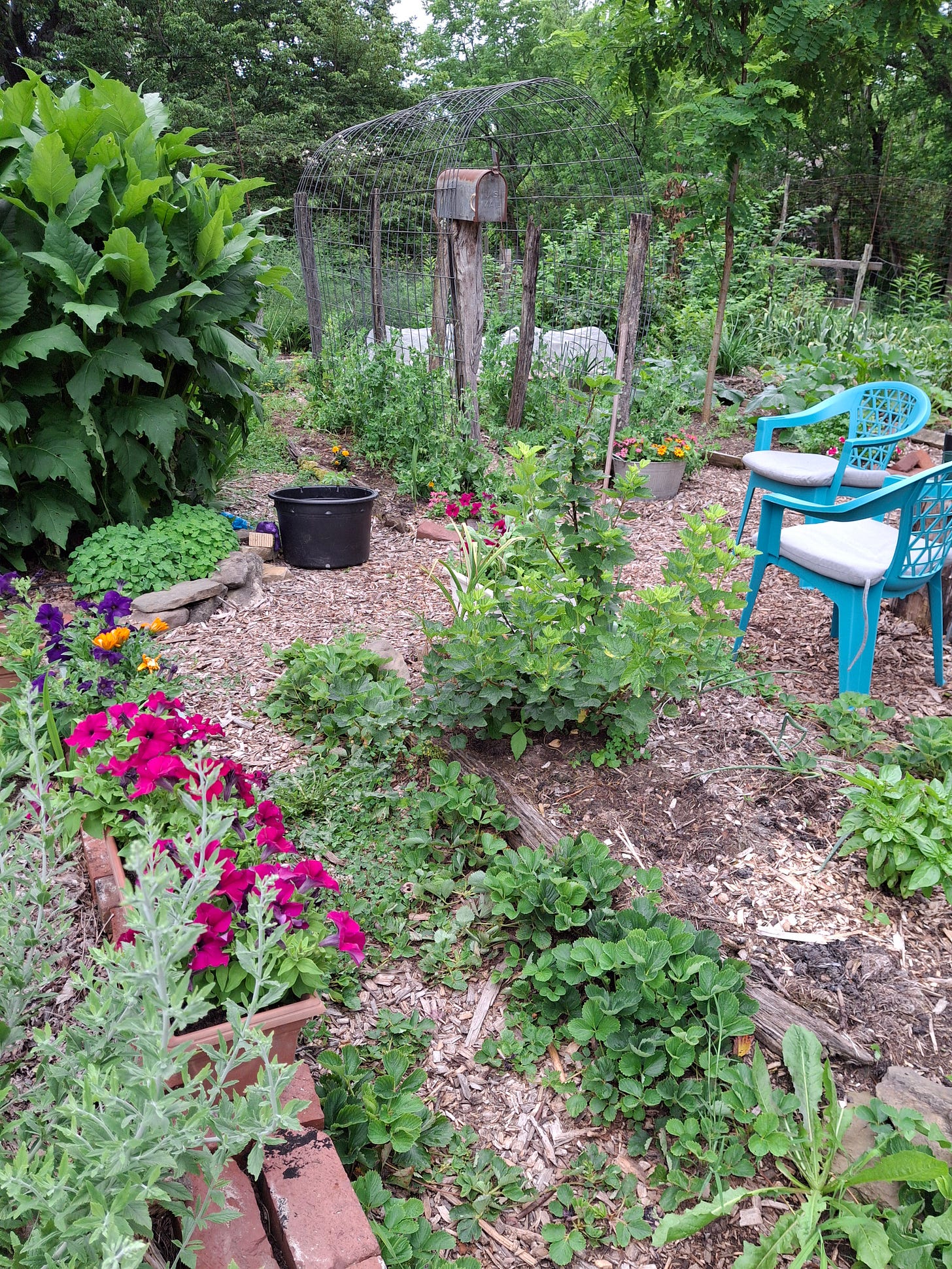
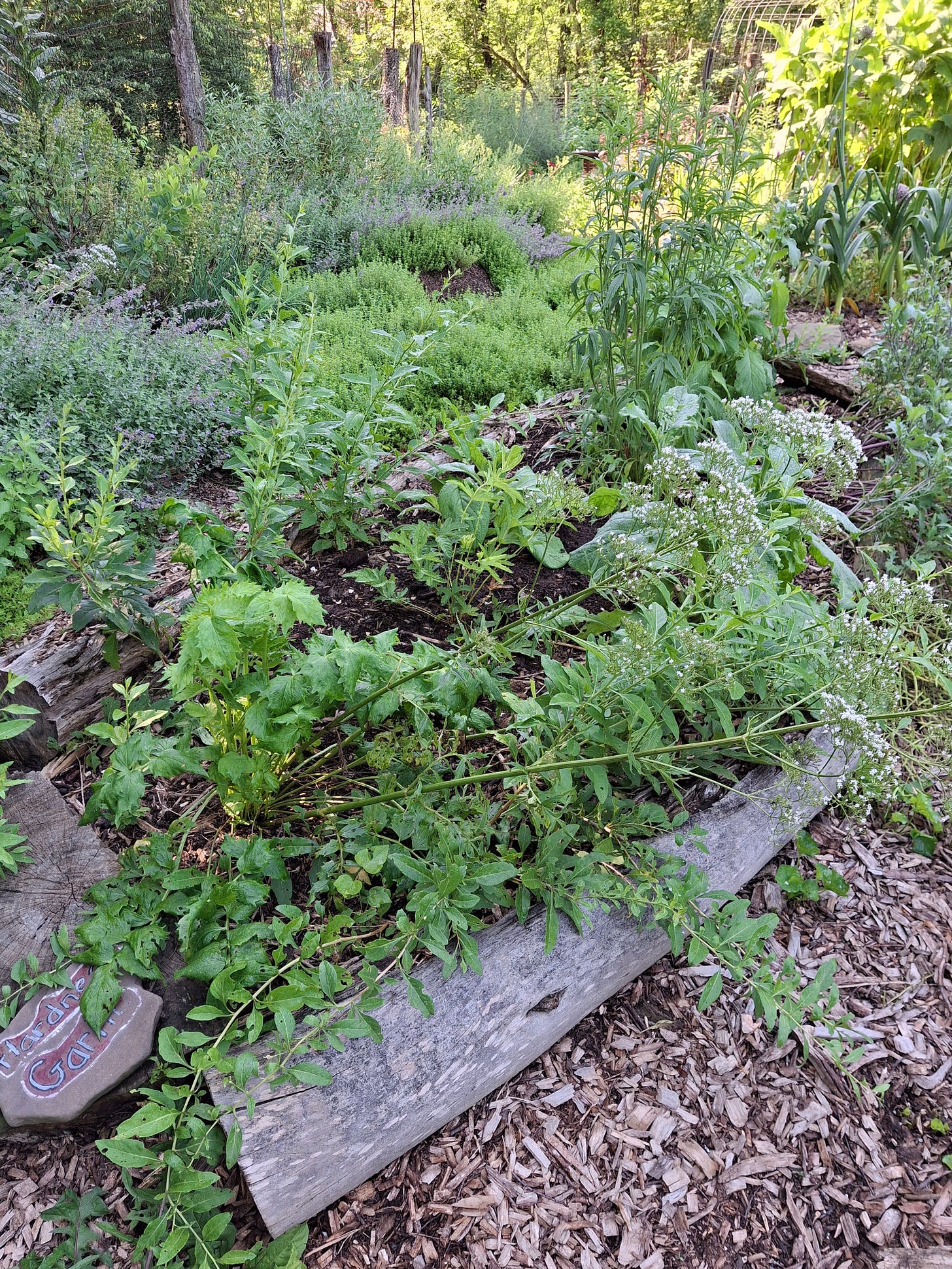
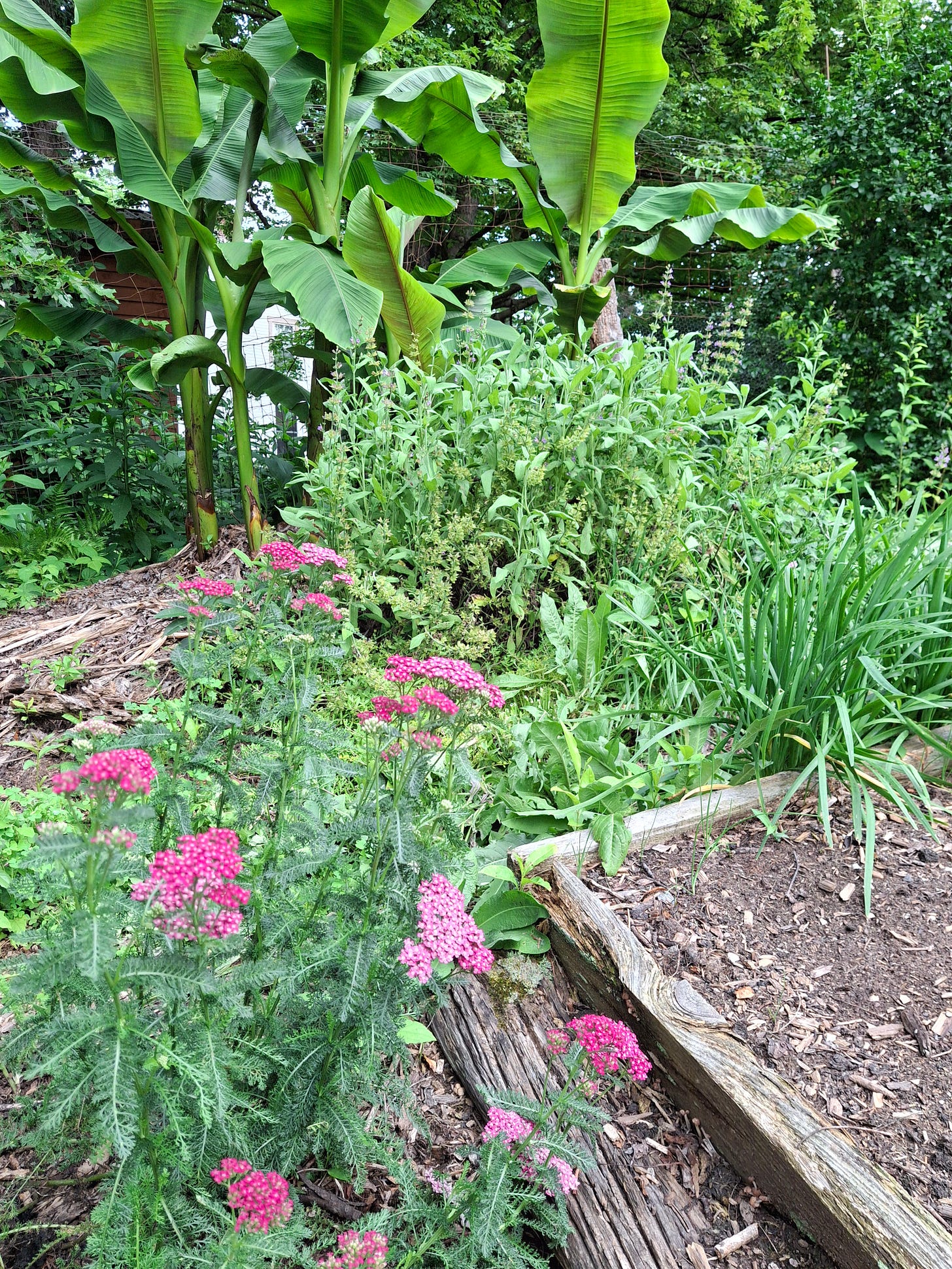

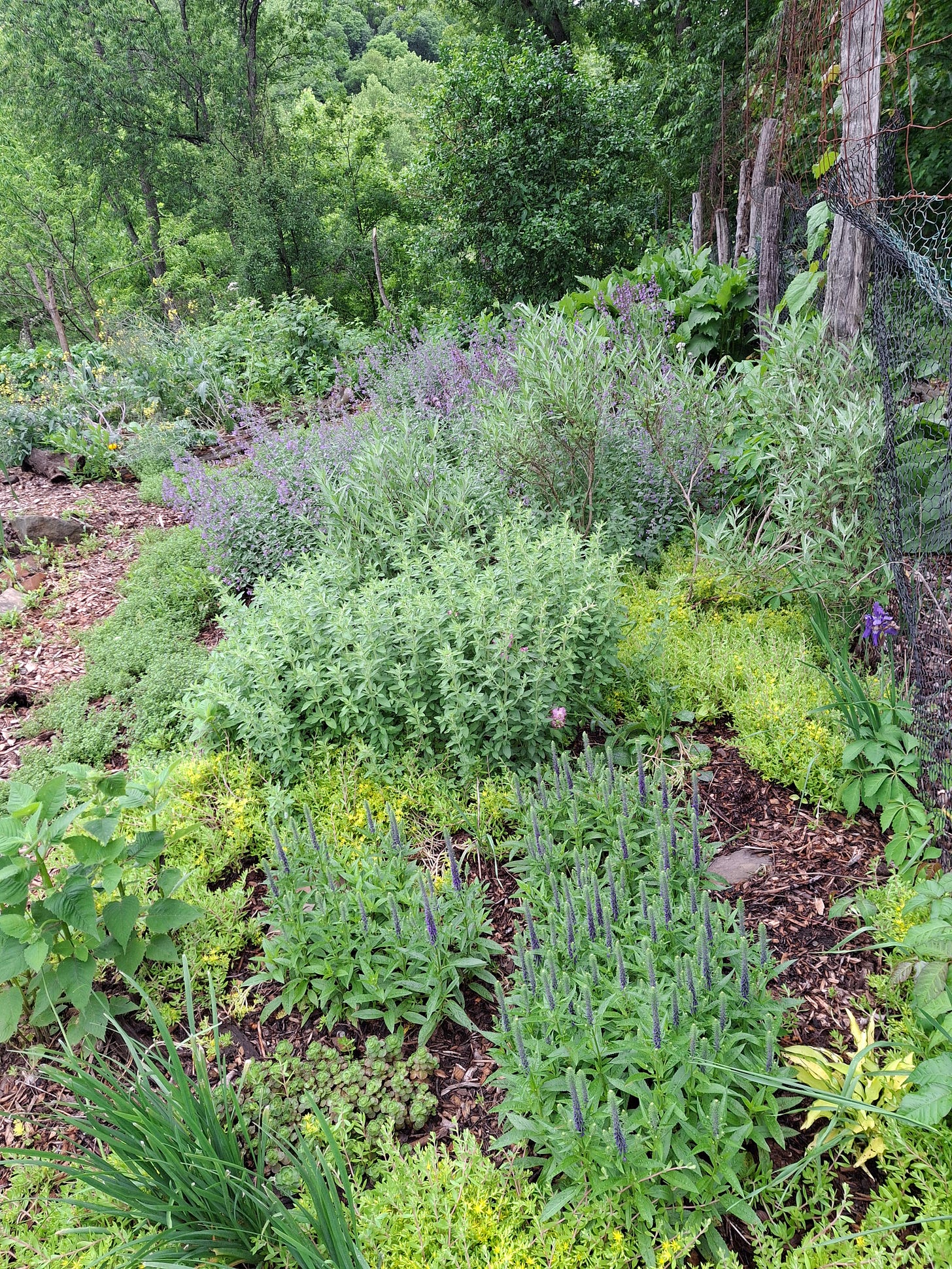
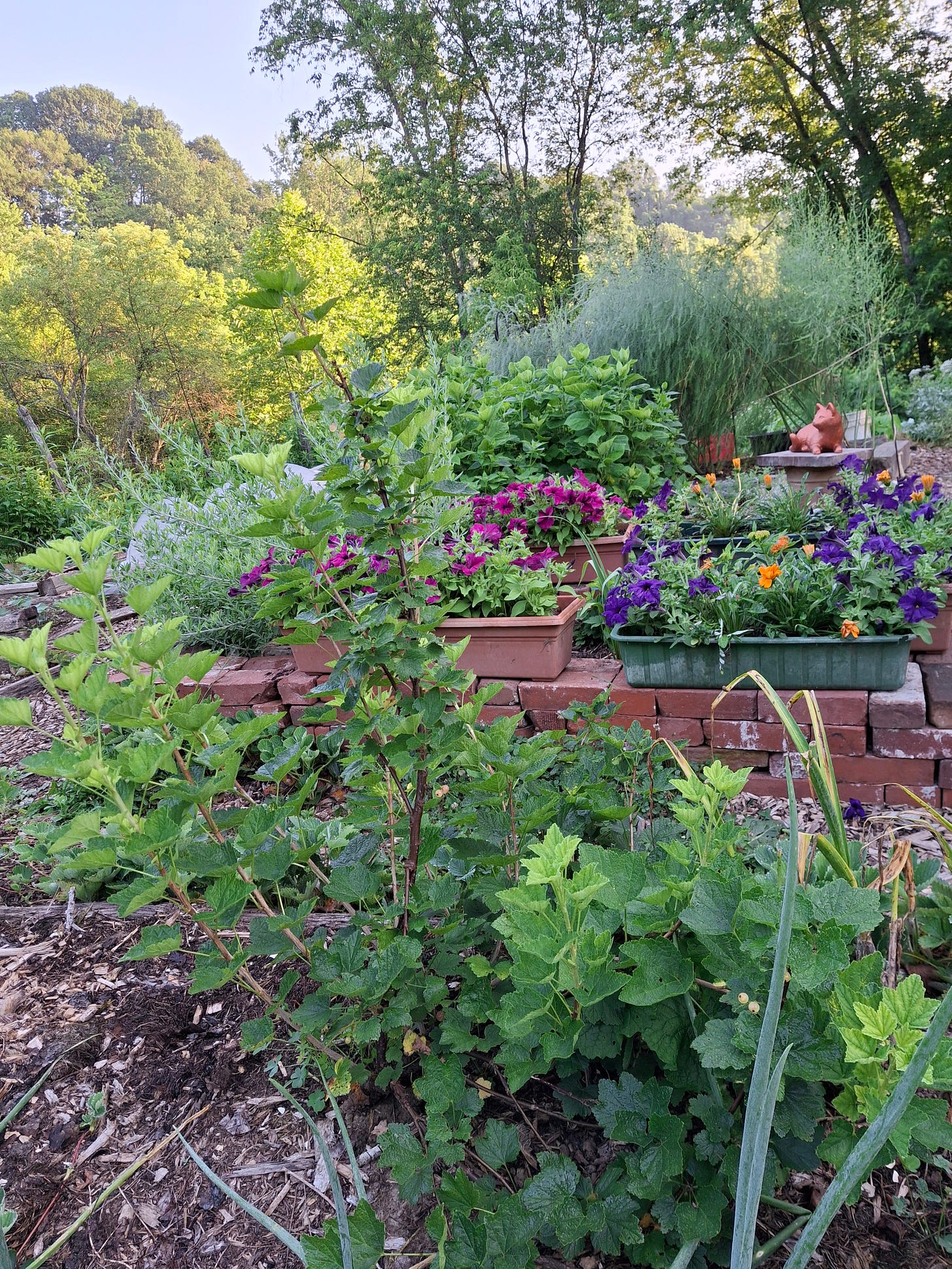
Great stuff! And equally great pictures. Love the hodge podge, zoning, placement according to tenacity, working with change. Your experience really shows through, the best basis for successful design.
Thank goodness for the bed of misfits!